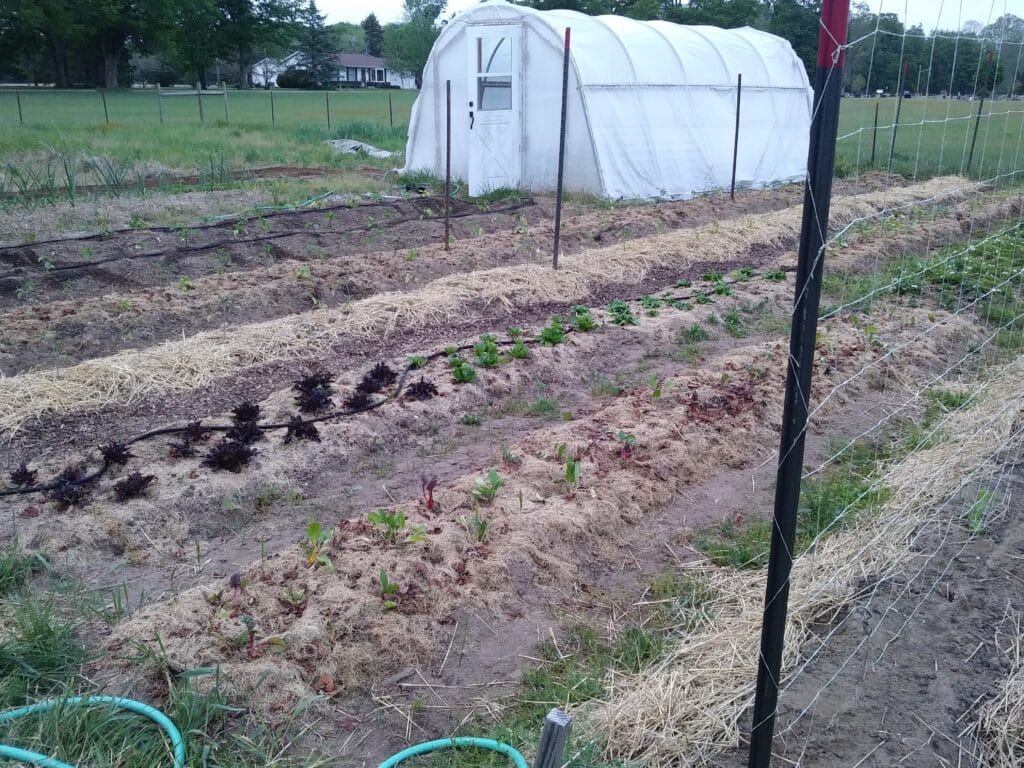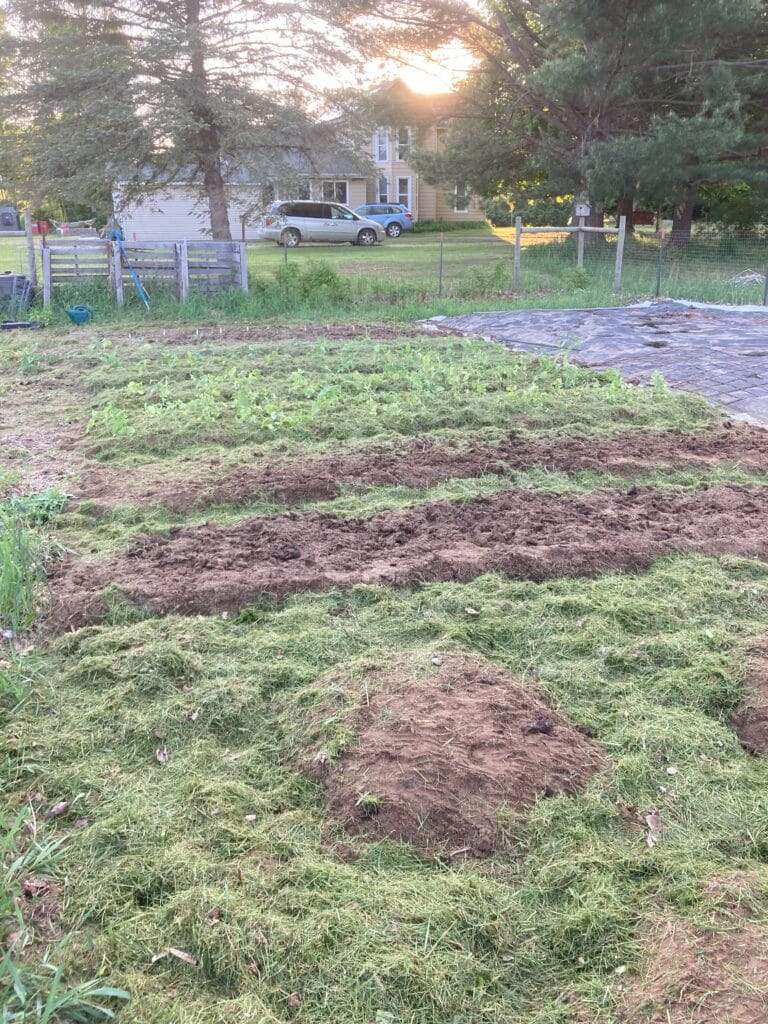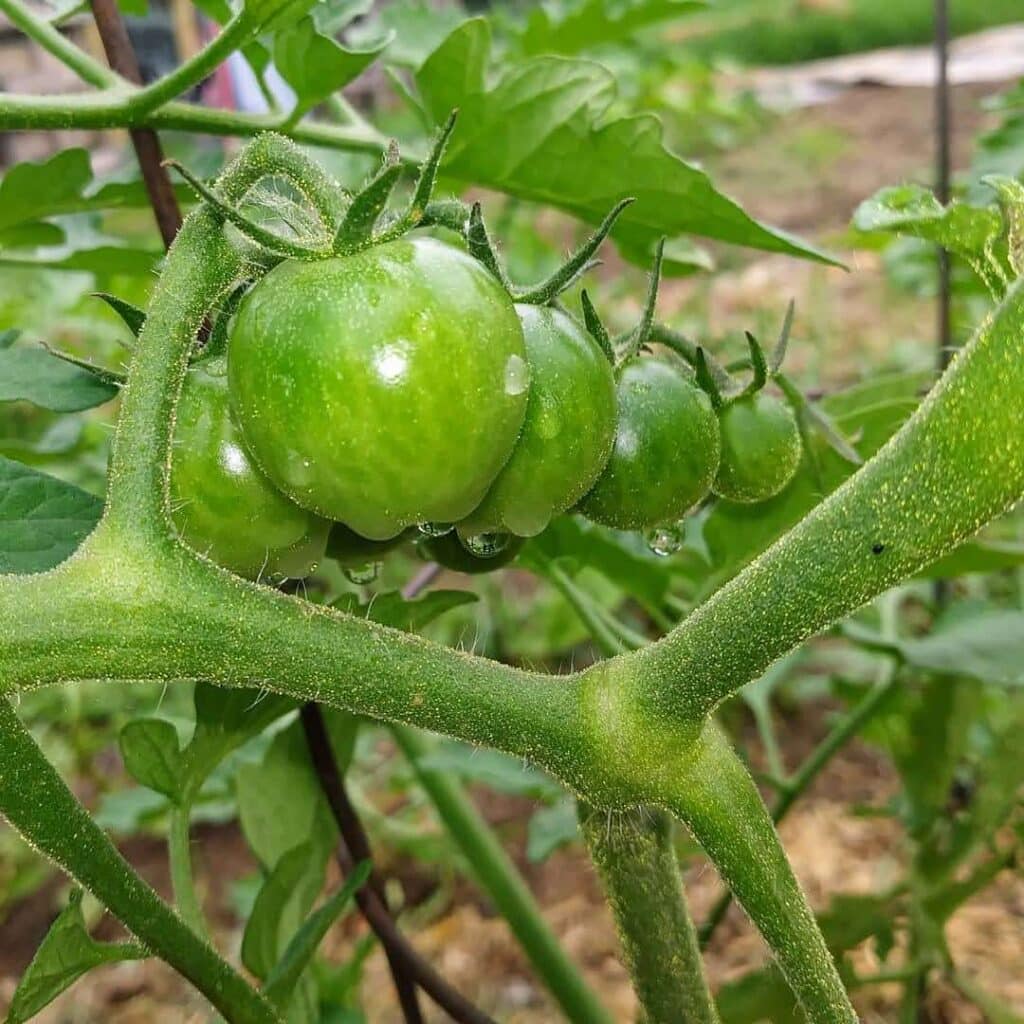Why Does Organic Food Cost More? In my experience as an organic farmer, there are nine key reasons, including the sheer cost of organic certification, and the small size of most organic farms.
The organic movement comes at a cost—literally. Pound for pound, you’ll probably pay more for organic produce than conventional. Why is that? It turns out that many factors keep organic food at a higher price point.
Here’s an overview of why and our best guess as to whether organic prices will remain higher than conventional long-term.

A Quick Definition: What We Mean By Organic Food
Since becoming a buzzword, the term “organic” has become diluted. Without context, it’s unclear whether someone is using it to refer to official regulations or a general feeling of ‘healthy and natural.’
Here, we’re using organic in reference to the certification standards established and regulated by the USDA. Organic food is produced without synthetic herbicides, pesticides, and fertilizers. But more than that, it’s a mindset of earth-first farming, where growers make decisions that both better the planet and their bottom line.
In principle, organic farms should work to protect natural resources and biodiversity while producing healthy food that’s free of potentially toxic additives.
Farming is a challenging business under the best of circumstances, but organic farms face many unique obstacles that lead to higher prices. Here are 9 reasons organic food tends to cost more.
#1. Organic Farms Tend to Be Small and Diversified
While organic farms vary significantly in scale and production style, they are more likely than conventional farms to be diversified operations.
So, for instance, a large conventional farm can invest in single-use equipment for cultivating large amounts of one specific crop. It will be expensive upfront but allows for consistent results, especially when growing conditions are artificially controlled with pesticides, herbicides, and synthetic fertilizers.
See also: Glyphosate in oats: what you need to know
Organic farms, in contrast, are more likely to grow various crops, each requiring slightly different cultivation strategies. An organic farm that purchases the same piece of equipment is less likely to find it as profitable as a conventional farm.
Likewise, the average organic farm in the United States is 333 acres, compared to 444 acres for farms overall. This smaller size can make it harder for organic farms to get contracts with large distributors that can afford to sell at a lower profit margin. Organic produce vendors need to keep the prices slightly higher than their conventional counterparts to make the same level of profit.

#2. Economies of Scale Don’t Work for Organic Farming
Compared to conventional farms, organic growers tend to deal with a lower volume of produce. Many mega farms even split their operations between the two growing styles, requiring extra infrastructure for processing and transportation to segregate their conventional and organic crops to avoid cross-contamination.
The smaller, more boutique operations for organic growing are less efficient than standard production processes because the farm can’t scale up to the point of peak profitability. Consequently, the cost per unit can be higher.
#3. Organic Farms are More Dependent on Human Labor
Spend time on an organic farm, and you’ll fast learn what chews up most of the workday—weeding. While large-scale organic farms can invest in certified organic herbicides and cultivation equipment that cuts down on human labor, this equipment is almost always more expensive and less efficient than what a mono-crop conventional farm would use. Organic farmers also spend more time than conventional farmers on tasks that don’t directly correlate to higher income, including crop rotation and ecosystem protection.
My experience as an organic farmer
I worked as one of four full-time staff members on a diverse, 20-acre organic farm in 2014. Despite its relatively small size, this farm was a powerhouse that supplied almost all the organic produce sold at one of the largest farmers’ markets in the state. As such, we were always barely keeping our heads above water. There were more essential tasks than hours of daylight, and any wasted movements often meant sellable produce languished in fields because there wasn’t enough time to harvest it before the farmers’ market.
Each farm worker was paid a few dollars more than minimum wage, in cash. There were no benefits to speak of; we didn’t take the job to get rich. Yet even so, the farm owner was barely breaking even. Despite putting in 16-hour days nine months out of the year, he was very transparent that the only long-term route for personal profitability would be selling the property. He was in a catch-22 where more workers were necessary to maximize his production, but the profitability potential barely surpassed the salary he could pay them.

#4. Supply and Demand
Organic farms comprise just 6% of US produce sales and 1% of farms. However, demand for toxin-free products is surging, and many shoppers are willing to pay a premium to get them. Thus, organic farmers can charge more for their merchandise. If demand continues to increase, farmers may scale up their operations to better meet it, leading to lower prices in the long run.
#5. Organic Food is More Dependent on External Factors
Conventional farming views land as a blank slate onto which any number of (synthetic) amendments can be added to create optimal growing conditions. Organic farms, in contrast, are limited in inputs and more reliant on external factors like soil health, microbial activity, and the weather.
In some cases, this can increase profitability because plants are given the tools to become resilient and not dependent on a “feeding tube” of nutrients. For example, my region is going through a record-setting drought. Conventional crop fields are languishing because farmers can’t pump out enough water to offset the lack of rain.
In contrast, organic farms are fairing better because farmers have invested time and money into optimizing soil conditions for resilience and robust growth. Their approach is paying off now, but only because of years of investment to get to that point.
#6. Less Efficient Use of Land
Conventional farming has many problems, but it’s an efficient use of acreage. A German study found that organic farming requires more land for the same amount of produce. That’s extra property a farmer is paying taxes or a mortgage/lease on, leading to more expenses that must be covered through product pricing.
The converse is also true. On average, a conventional farm will outperform an organic farm of the same size from a total yield standpoint, meaning the conventional farm has more units to sell and can consequential still make a profit at a lower price point.
#7. A Less Consistent Customer Base
While studies show that people who commit to shopping organic tend to stick with it long-term, the reality is that many small organic farms struggle to tap into that loyal customer base. Instead of selling at grocery stores, they bring their produce to farmers’ markets where many shoppers are in the mood to browse for luxuries rather than buy their weekly groceries.
I’ve sold at farmers’ markets for different organic farms in various states, and I’ve noticed one consistent trend—shoppers love to stop at my stand, admire the heirloom tomatoes and smell the basil, but what makes them open their wallets are baked goods and other premade products. It’s the rare shopper that comes weekly and buys a substantial amount of fresh produce. Organic farms have to work hard to establish a consistent customer base, and higher pricing per product is a reflection of that.
#8. Organic Certification Isn’t Cheap
Farms can’t legally claim to be organic without USDA certification. There are many hurdles to getting this certification, including an application fee of around $400 and annual renewal fees that range from $700 to $1,500 (actual costs vary by state). Many growers will raise their prices to offset the unpaid hours and fees involved with earning it.
Others will skip the certification process entirely and opt for different labels (i.e.; “naturally grown”) to cut costs. However, without evidence of a respected third-party certification, these farms may struggle to stay competitive with organic growers.
#9. Government Subsidies Favor Big Ag
Many farmers are reliant on government subsidies to turn a profit. Unfortunately, the pickings are slim for organic growers. The lion’s share of governmental aid goes to the largest farming operations in the US and subsidizes commodity crops like corn, soybeans, and wheat far more often than organic kale.
Our Prognosis: Organic Prices Will Go Down… In Time
No matter where you’re buying it, there’s no question that food is expensive. But here’s the good news. As organic food grows in popularity, many of the costs listed here will decline. Economies of scale will begin working in farmers’ favor, and continuous innovation is helping to push out new labor-saving equipment that allows a farm crew to work more efficiently.
Organic farming has been on the rise in the United States for years, and consumer interest shows no sign of slowing down. As naturally-grown, non-toxic food becomes the default, not the exception, we can all expect prices that better match what we’re paying for conventional.